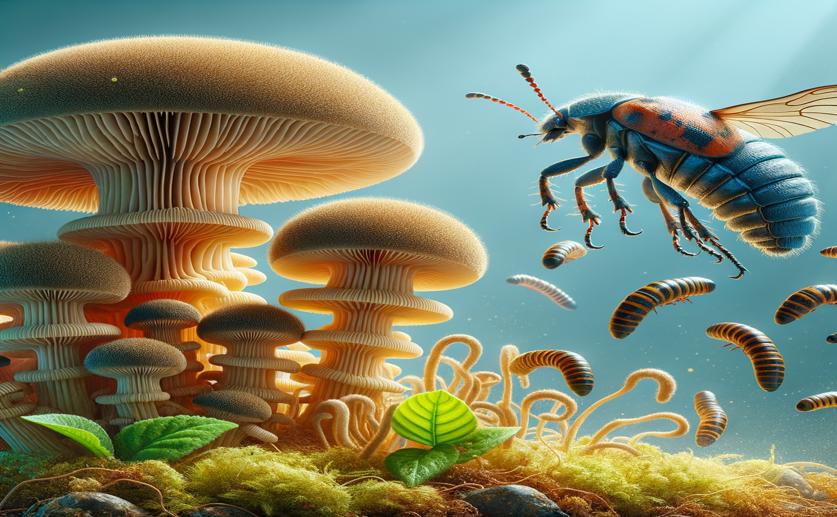
Identifying Bug-Killing Fungi Against a Major Pest
Jenn Hoskins
23rd April, 2024

Image Source: Natural Science News, 2024
Key Findings
- Indonesian study finds fungi that can kill the invasive fall armyworm pest in 2-4.33 days
- Three fungi species identified: Sarocladium strictum, Talaromyces purpureogenus, and Aspergillus terreus
- These fungi offer a potential eco-friendly alternative to chemical pesticides for pest control in agriculture
References
Main Study
1) Selection and molecular identification of specific entomopathogens in South Sulawesi and the pathogenicity to fall armyworm (Spodopterafrugiperda JE. Smith) (Lepidoptera: Noctuidae)
Published 22nd April, 2024
https://doi.org/10.1186/s41938-024-00786-4
Related Studies
2) Biocontrol of early blight disease of eggplant using endophytic Aspergillus terreus: improving plant immunological, physiological and antifungal activities.
3) Insect-fungal-interactions: A detailed review on entomopathogenic fungi pathogenicity to combat insect pests.
4) Molecular characterization of indigenous microbes and its potential as a biological control agent of Fusarium stem rot disease (Fusarium verticillioides) on maize.



 31st March, 2024 | Jenn Hoskins
31st March, 2024 | Jenn Hoskins